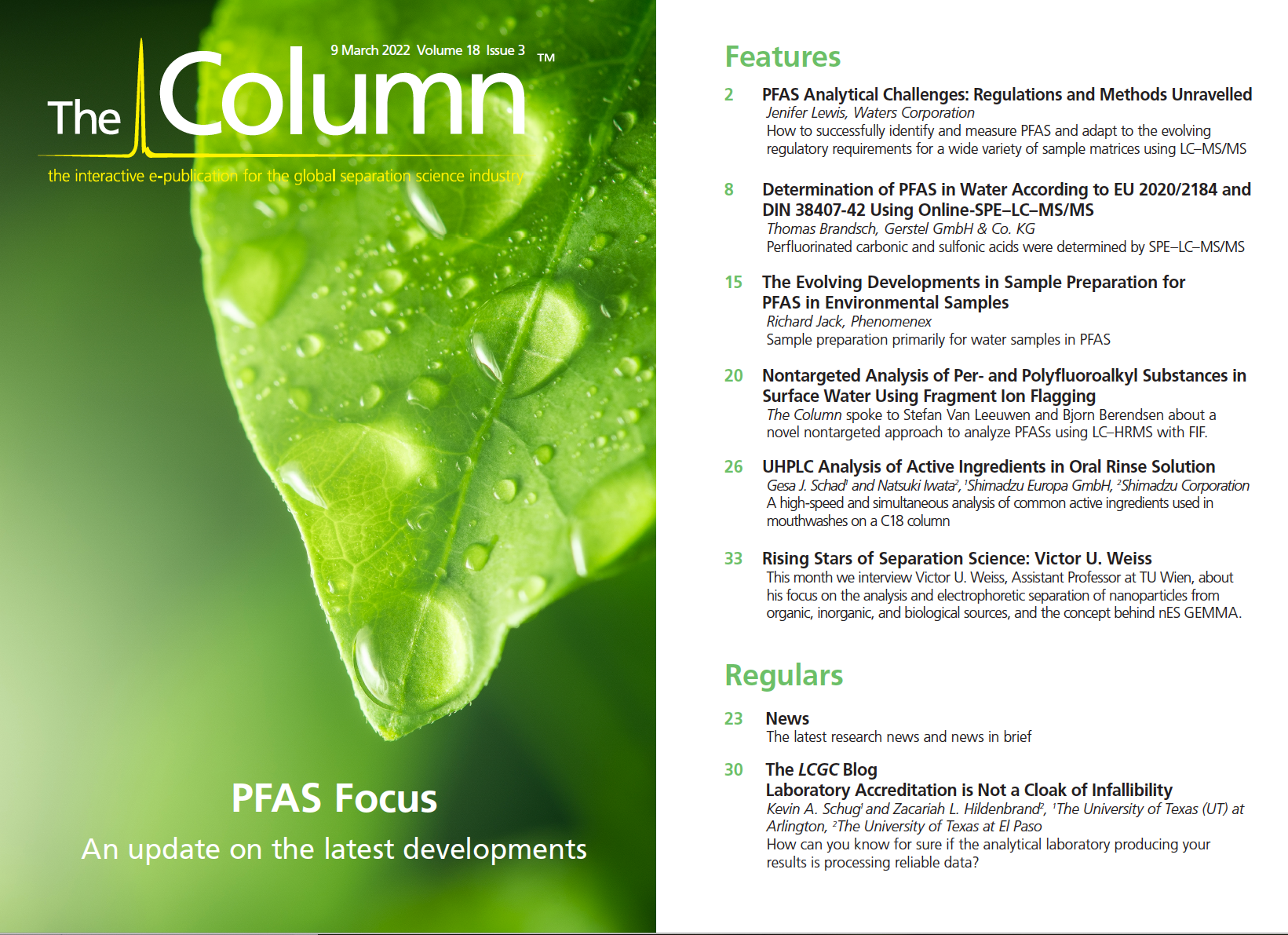Portable GC Coffee Analysis
Researchers have performed a volatile organic compound (VOC) analysis of coffee beans using a person-portable gas chromatography–toroidal ion-trap mass spectrometry (ppGC–TMS), and then compared it to a benchtop GC system (1).
Coffea canephora and Coffea arabica beans are amongst the most highly traded global agricultural commodities, with the beverages created from those beans incredibly popular. On top of the stimulating effects of caffeine, coffee offers a wide variety of aromas and taste profiles, with an entire sub-culture emerging to revere this plant product. A roasted coffee bean will have a complex composition from a combination of VOCs, including alcohols, esters, acids, pyrazines, phenols, and furans, amongst other compounds. All of these are a result of the many variables present in the life cycle of the food product, from plant to final brewed product. Coffee variety, growing conditions, fermentation, processing, roasting conditions, and brewing all contribute to the emergence of these unique VOC profiles. The assurance and consistency of that unique VOC profile is one of the key challenges for coffee producers. Currently, benchtop GC–MS is used for quality control and provides the gold standard for nontargeted, qualitative detection and identification of complex mixtures of VOCs. However, the separation and identification of compounds is only one half of the battle, with suitability, cost, time, and ease-of-use of the technique for implementation during the roasting process all requiring consideration.
As such, researchers investigated ppGC–TMS as an alternative solution. Theoretically, ppGC–TMS should be able to provide fast GC analysis, adequate sensitivity, and adequate selectivity, as well as the ability to be implemented at near to real-time over the duration of a coffee roasting process without the need for additional infrastructure. The researchers then compared the capabilities of ppGC–TMS to conventional GC–quadrupole time-of-flight MS (GC–QTOF-MS) and GC–quadrupole MS (GC–QMS) to contextualize the capabilities of the portable instrumentation and how associated design features alter the separation and detection of analytes.
The results of the study indicated that ppGC–TMS with headspace solid-phase microextraction (SPME) sampling provided a suitable compromise of reduced analytical capabilities for rapid and on-site analysis that could be used for VOC formation monitoring during the coffee roasting process.—L.B.
Reference
- R. Herron et al., Int. J. Mass Spectrom. 473, 116797 (2022).

Investigating 3D-Printable Stationary Phases in Liquid Chromatography
May 7th 20253D printing technology has potential in chromatography, but a major challenge is developing materials with both high porosity and robust mechanical properties. Recently, scientists compared the separation performances of eight different 3D printable stationary phases.
Detecting Hyper-Fast Chromatographic Peaks Using Ion Mobility Spectrometry
May 6th 2025Ion mobility spectrometers can detect trace compounds quickly, though they can face various issues with detecting certain peaks. University of Hannover scientists created a new system for resolving hyper-fast gas chromatography (GC) peaks.
University of Oklahoma and UC Davis Researchers Probe Lipidomic Profiles with RP-LC–HRMS/MS
May 6th 2025A joint study between the University of Oklahoma Health Sciences Center (Oklahoma City, Oklahoma) and the UC Davis West Coast Metabolomics Center (Davis, California) identified differentially regulated lipids in type 2 diabetes (T2D) and obesity through the application of reversed-phase liquid chromatography-accurate mass tandem mass spectrometry (RP-LC-accurate MS/MS).

.png&w=3840&q=75)

.png&w=3840&q=75)



.png&w=3840&q=75)



.png&w=3840&q=75)















